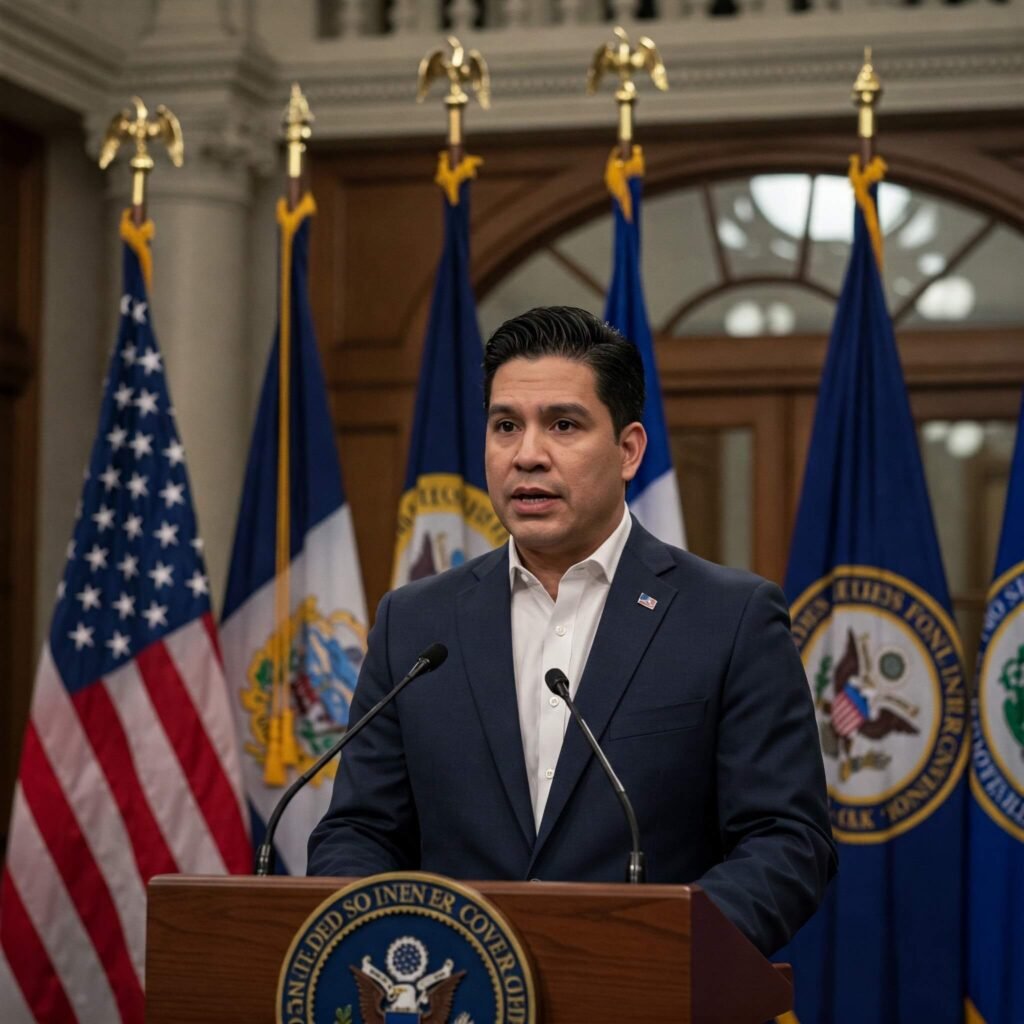The dynamic tension between State vs Federal power is a foundational element of American governance. It’s a constant negotiation written into the very fabric of the Constitution. This push and pull is ever-present. However, certain years see the lines drawn more sharply. Disagreements become more pronounced. As we navigate through 2025, we’re witnessing a particularly heated State vs Federal dynamic. In fact, several governors across the nation are stepping forward. They are asserting their authority and challenging the reach of the federal government.
This isn’t just abstract political science. These State vs Federal Power clashes have real-world consequences. For instance, they shape policies like environmental regulations and healthcare. Furthermore, they also impact immigration enforcement and economic directives. Understanding where governors are taking a stand against perceived federal overreach is crucial. It helps us grasp the evolving landscape of power in the United States.
The Shifting Landscape of State vs Federal Relations in 2025
The balance of power between the states and the federal government has always been a subject of debate. Historically, periods of national crisis or significant social change often tip the scales. Sometimes they tip towards Washington D.C. At other times, they empower the states. In 2025, several factors have intensified State vs Federal friction. These factors include differing political priorities between states and the White House. Economic pressures and evolving social issues also play a role.
We’re seeing governors finding points of contention, regardless of party affiliation. They believe the federal government is overstepping its bounds. Alternatively, they feel it fails to address state-specific needs adequately. This environment fosters a climate ripe for governors to take bold stances. They often leverage executive authority. Moreover, they also work with state legislatures to enact laws. These laws directly challenge federal directives or assert state sovereignty.
[Image Placeholder: An image depicting a visual metaphor for the balance or tension between state and federal power – perhaps scales of justice with state seals on one side and federal symbols on the other, or intertwined state and federal flags.]
Key Governors and Their Stands Against Federal Authority in 2025
Across the United States, several governors have become focal points in the State vs Federal debate. This is through their actions and policy decisions in 2025. While specific flashpoints vary by state, common themes emerge in these challenges to federal authority.
Let’s explore some scenarios. They are hypothetical, yet plausible. In essence, they mirror the kinds of State vs Federal conflicts we’ve observed. We might expect to see them amplified in 2025:
- Challenging Federal Mandates: Governors in states with specific industries (like agriculture or energy) might push back forcefully. They could oppose new federal environmental regulations. Or perhaps, they might oppose mandates they argue are burdensome. They feel these harm their state’s economic health.
- H3: Governors Resisting Environmental Mandates
- H3: Economic Impacts of State vs Federal Regulatory Conflicts
- Asserting State Sovereignty on Borders or Resources: States bordering other countries or possessing significant natural resources may see governors taking a more aggressive stance. Specifically, this is on issues like border security or resource management. They might enact state-level policies. These policies could conflict with federal approaches or seek to supersede them.
- H3: State vs Federal Authority at the Border in 2025
- H3: Natural Resources and State vs Federal Control
- Pushing Back on Federal Executive Orders: Federal executive actions cover many areas. These include social policy or digital regulation. As a result, governors might issue counter-orders or refuse cooperation. They could even initiate legal challenges. This highlights the fundamental State vs Federal power struggle in executive actions.
- H3: State Responses to Federal Executive Orders
- H3: Legal Battles in the State vs Federal Arena
These stands often involve significant legal maneuvering. They also require public communication efforts to rally support. Furthermore, direct confrontations with federal agencies or the administration in Washington are common.

Why These State vs Federal Clashes Matter to You
It might be easy to view State vs Federal conflicts as high-level political drama. But the outcomes directly affect the lives of everyday citizens.
- Impact on Policy Implementation: When governors push back against federal directives, it can delay implementation. It can alter or even halt policies. This applies from healthcare access and infrastructure projects to educational standards and civil rights protections within that state.
- Variation in Rights and Services: These power struggles can lead to significant variations in laws and regulations. The availability of services can also differ from state to state. Consequently, this highlights how state authority shapes daily life differently depending on where you live.
- Constitutional Precedents: Legal challenges stemming from State vs Federal standoffs often end up in federal courts, including the Supreme Court. The decisions made in these cases set crucial precedents. They define the boundaries of state and federal power for years to come. Understanding these developments helps citizens grasp the evolving interpretation of the U.S. Constitution. (See: [Link to National Archives – U.S. Constitution] or [Link to Supreme Court Website])

Navigating the State vs Federal Divide: What’s Next?
The State vs Federal conflicts of 2025 are far from resolved. The path forward involves a mix of actions. These include legal battles and political negotiations. Legislative action at state and federal levels is also possible.
- Legal Challenges: Many stands by governors against federal authority will likely face court challenges. This often leads to prolonged legal battles. The Supreme Court could ultimately decide them.
- Political Negotiation: Behind the public confrontations, intense negotiations often occur. State and federal officials aim to find common ground or compromise. However, success is not guaranteed.
- Public Opinion: The level of public support in a state matters significantly. It influences the viability and impact of a governor’s stand against the federal government.
- For citizens, staying informed about these State vs Federal dynamics is key. Understand which government level is responsible for which services and regulations. See where conflicts are arising. In doing so, this empowers you to engage effectively with representatives at both state and federal levels. (Consider exploring resources from organizations that track intergovernmental relations, like [Link to a non-partisan think tank focusing on federalism]).




